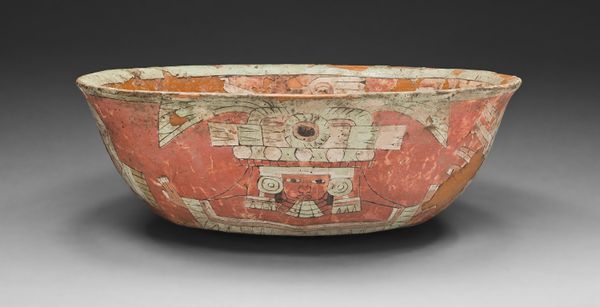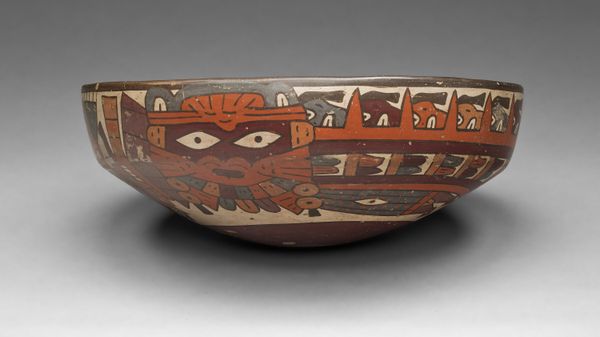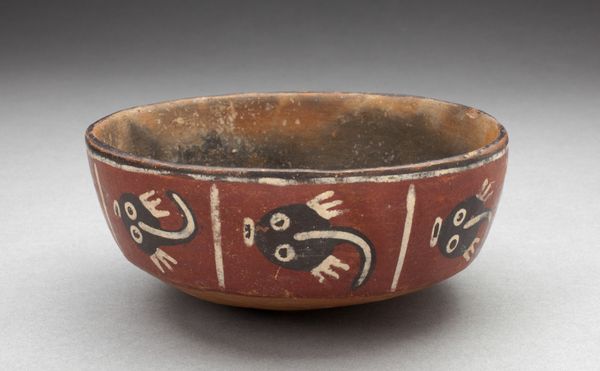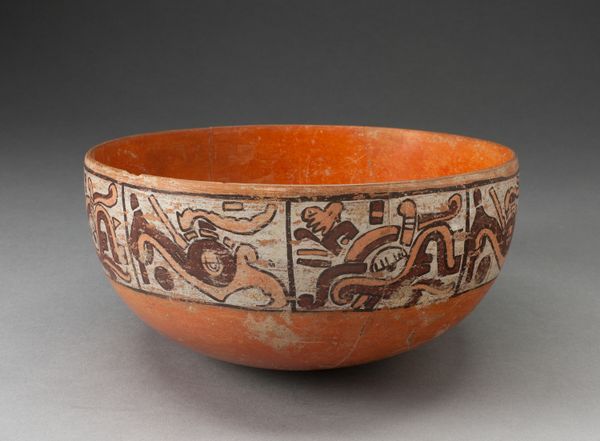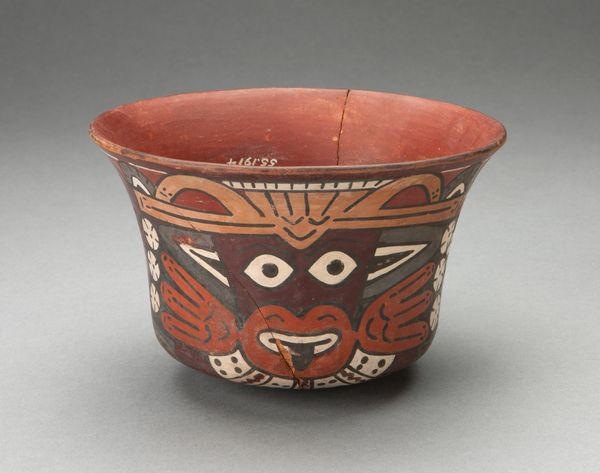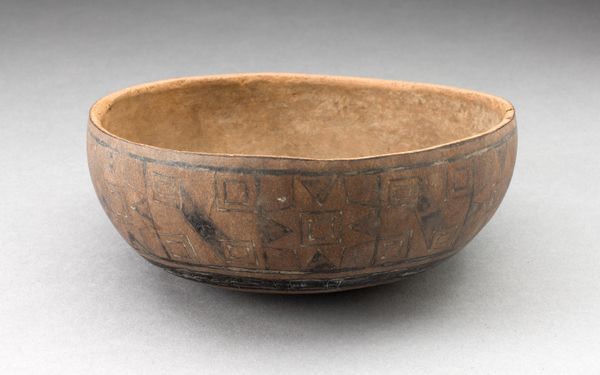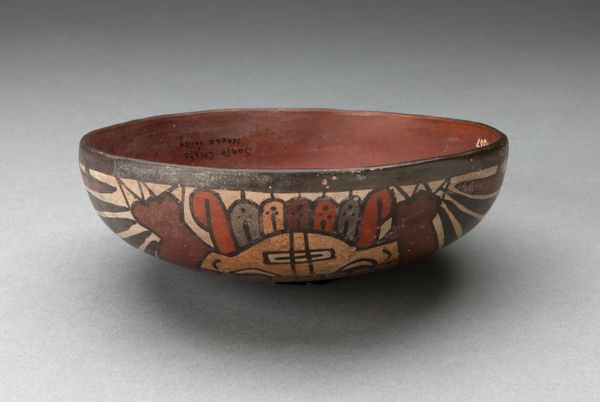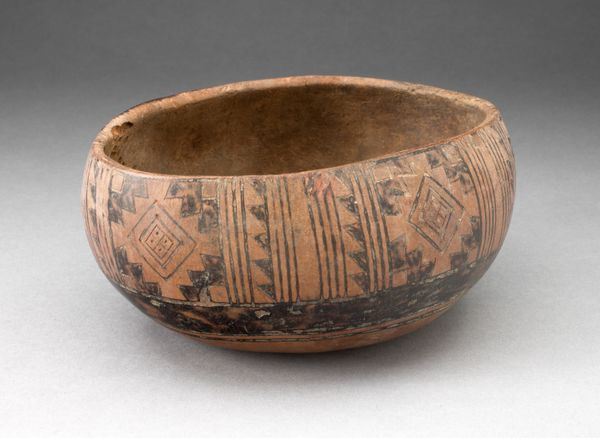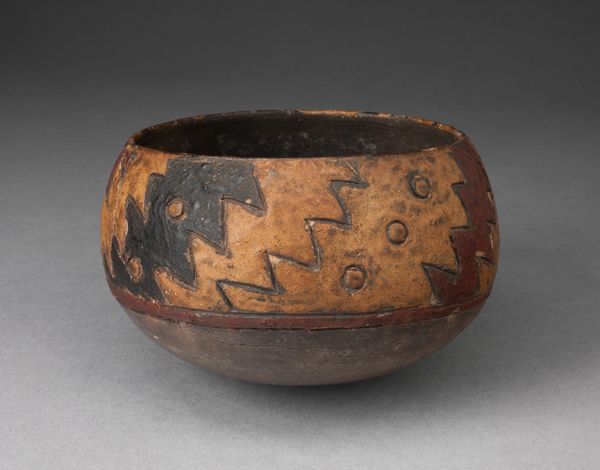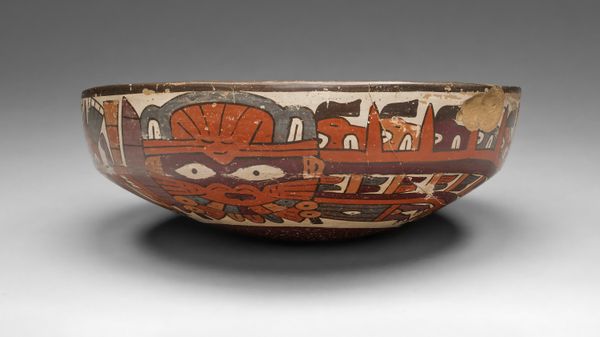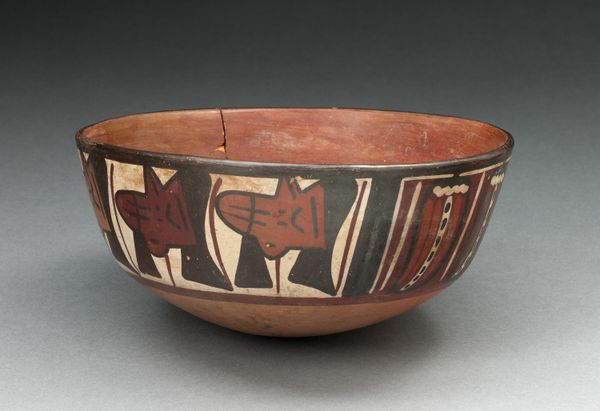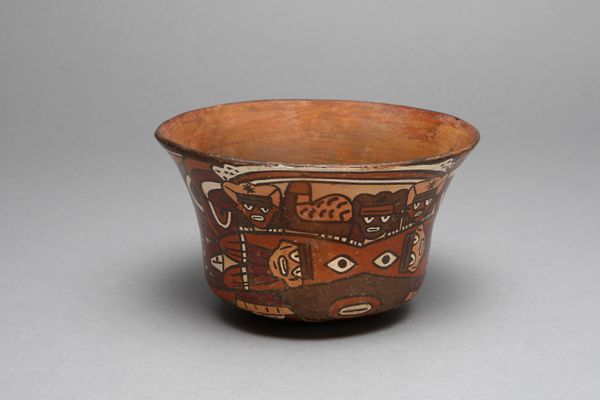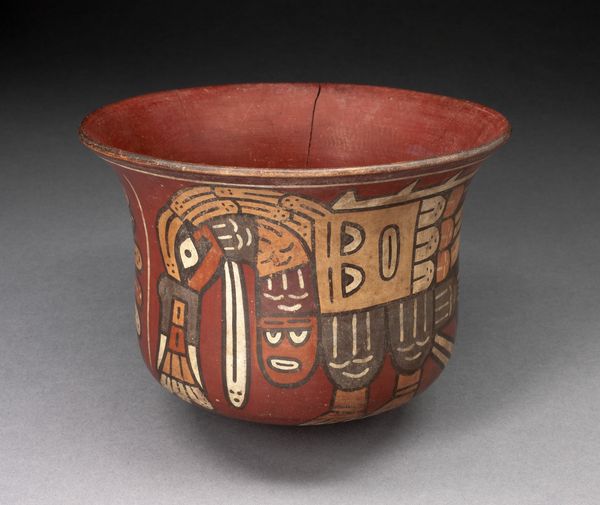
ceramic, earthenware
#
ceramic
#
earthenware
#
geometric
#
ceramic
#
indigenous-americas
Dimensions: Diam. 20.3 cm (8 in.)
Copyright: Public Domain
Editor: This bowl, dating back to possibly between 600 and 900, is made of earthenware ceramic and features abstract and geometric designs. The cheerful central face gives it an unexpectedly playful mood. How would you interpret this piece within its cultural context? Curator: That's a fascinating observation! Considering its historical context, we should avoid projecting modern ideas of "playfulness" onto it. Pre-Columbian art was often deeply connected to ritual and belief systems. This bowl, crafted by the Jalisco people, was likely much more than a simple vessel. It’s function was closely tied to socio-religious life. Editor: So the design might have specific symbolic significance? Curator: Precisely. While we don't have a definitive Rosetta Stone to decipher every symbol, the geometric patterns and stylized imagery probably conveyed specific meanings within their community. Think about the politics of imagery at the time. Perhaps it signified status, a mythological story, or some connection to the supernatural realm. Consider also how museums choose which pieces like this one to display, and the politics behind the stories that get told. Does knowing that make you reconsider the initial impression you had? Editor: It definitely adds another layer! The bowl transforms from just a fun object into something that carried significant cultural weight. Curator: Exactly. Now, looking at it, knowing it would have been displayed for an upper class family or only at special rituals, do you see the bowl differently? Editor: I do. It is interesting to view such an ancient indigenous American earthenware object not as something trivial but as an icon to represent the vast cultural expression in a pre-Columbian world. Curator: And that recognition opens up our perspective. We begin to view it not just as a crafted object, but as a piece invested with significance from its historic era.
Comments
No comments
Be the first to comment and join the conversation on the ultimate creative platform.
